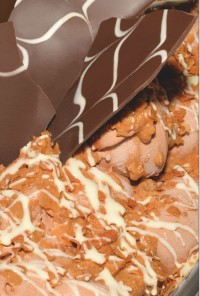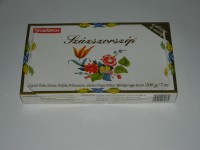Pralines, also known as Belgian chocolates, Belgian chocolate fondants or chocolate bonbons, are cases of chocolate (if from Belgium usually a quality, branded lower-melting point Belgian chocolate) filled with a soft centre. Jean Neuhaus II, a Belgian chocolatier, is generally credited for their introduction in 1912, although they were probably made since the 19th century.
There have always been many types and shapes: nearly always containing a chocolate shell with a softer filling. Confusion can arise over the use of the word praline in Belgium as it may refer to filled chocolates in general known as pralines /prɑːliːn/ and it may also refer to a traditional praline filling common in Europe (caramelised hazelnuts (noisettes) or almonds (amandes) ground into a paste, sometimes with whey powder, condensed milk or cream) described as praliné /prɑːliːneɪ/. Belgian chocolates (pralines) are not limited to the traditional praliné filling and often include nuts, marzipan, salted caramel, coffee, a spirit, cream liqueur, cherry or a chocolate blend that contrasts with the outer shell. They are often sold in stylised boxes in the form of a gift box. The largest manufacturers are Neuhaus, Godiva, Leonidas, and Guylian.[citation needed]
en



